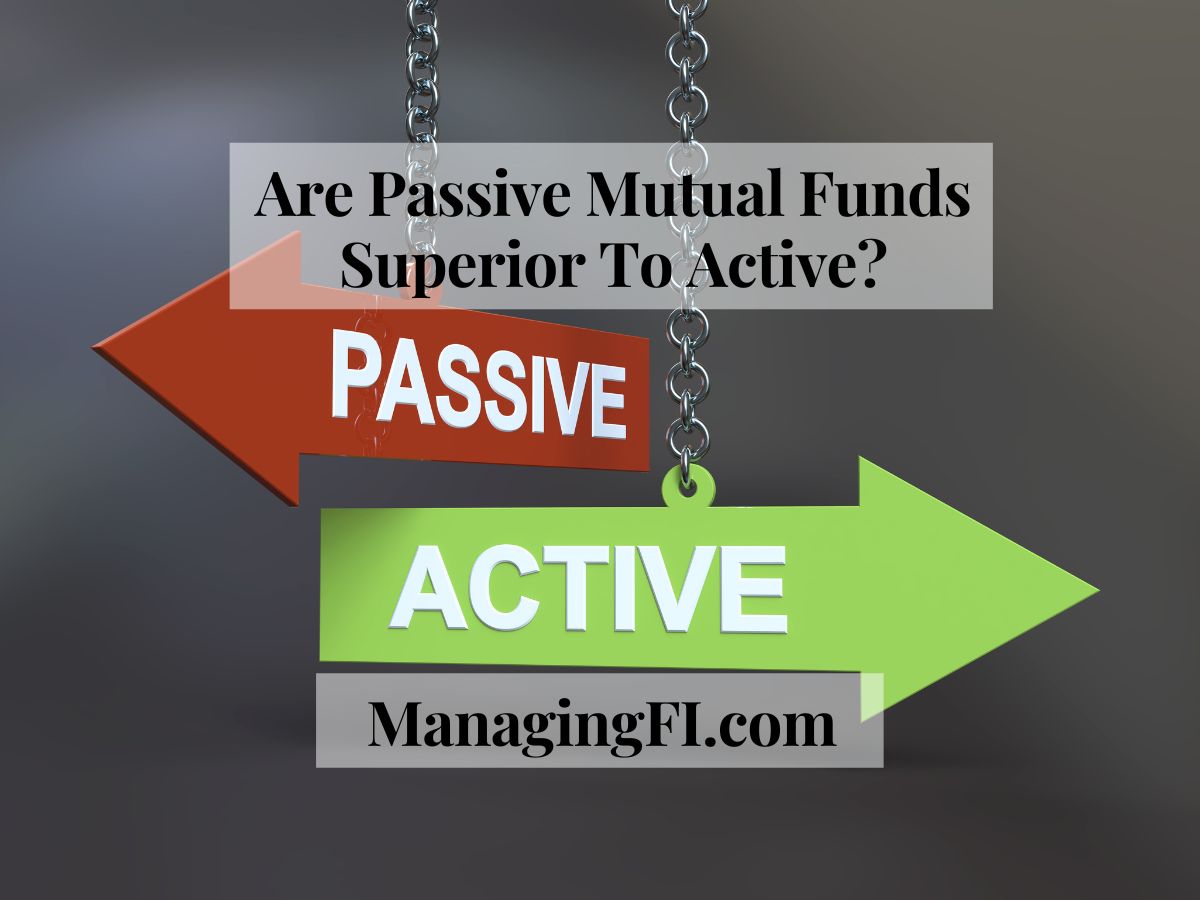BLUF: On average, active mutual funds largely underperform their benchmarks, have much higher fees and are less diversified than passive mutual funds. If held in a taxable account they often generate lower returns after taxes than passive mutual funds that follow the benchmarks.
Everyone wants their portfolios to do well. Many of us work a job or run a business saving and investing for the future. We hope that those investments will grow for us in the future to fund our goals be it security, retirement, legacy (prestige, inheritance or generational wealth), charitable or some combination of those.
In order for investments to grow, they need to perform. How they perform over a lifetime will have a huge impact on reaching our goals. Over the long term, just a 1% difference in the performance of your portfolio can compound to some very large differences.
Take a 30 year old that starts with zero savings. If they save $1,000 a month for 35 years and get a return of 6% per year they’ll have $1.4M at age 65.
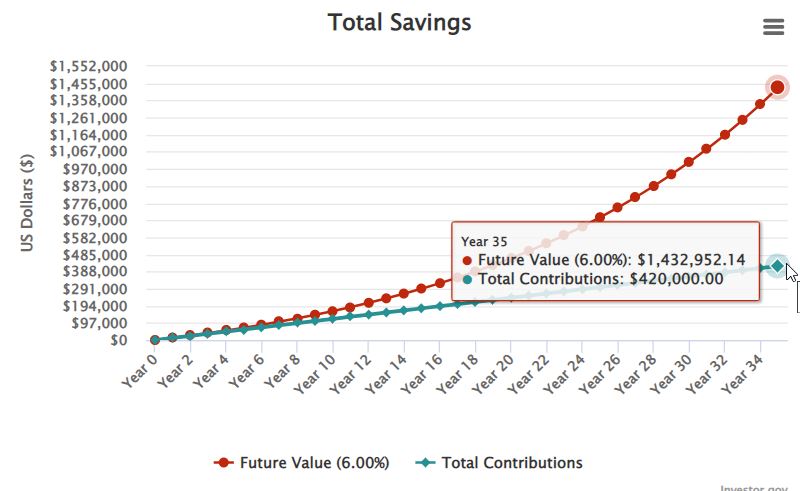
Take the same 30 year old but this time they get a return of 7%. That 1% of additional return compounds to $1.8M or 25% more.
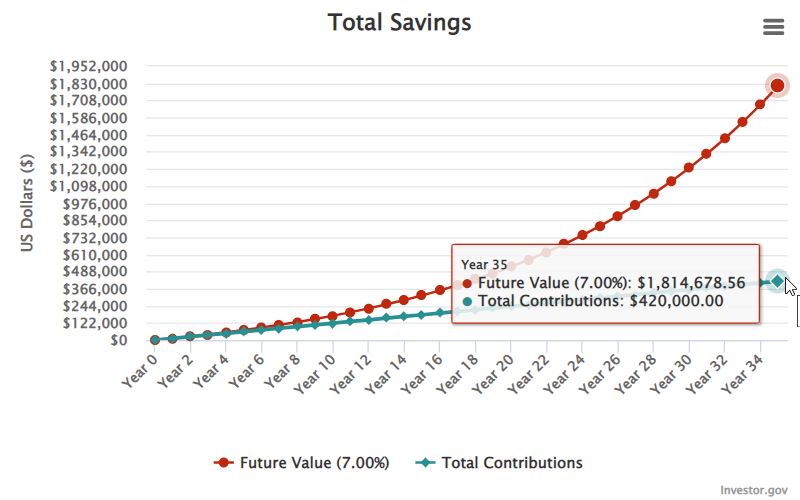
Due to this big return difference, people are constantly searching for the “best” place to invest their money with best usually equating to overall return performance. One important choice is whether to invest in a passive or an active mutual fund.
In this post we’ll explore what passive and active mutual funds are, the key differences between them and some things to consider when choosing. For simplicity I’m going to talk about mutual funds but the same points apply to passive and active ETFs.
If you don’t know much about mutual funds, ETF’s or index funds then I suggest you read this deep dive into the basics of each.
Passive Mutual Funds
Passive mutual funds are are seeking to replicate the performance of an index, a sector or some other benchmark. These funds aren’t trying to beat the market. The fund manager doesn’t have a choice of what to invest in. They invest in the exact securities required to replicate that index or benchmarch.
Stock index mutual funds are all considered passive mutual funds and are some of the most popular investments out there. The funds only change the stocks that they hold when the benchmark index removes or adds companies from it.
For example, if an S&P500 index kicks a company out then the mutual fund tracking that index sells all shares of the booted company and buys the shares of the company that replaces it.
A popular example of a passive mutual fund is the Vanguard VTSAX total stock market index mutual fund. You can see that its investment strategy is to track the CRSP US total market index. That’s the benchmark that VTSAX does it’s best to replicate.

Active Mutual Funds
Active mutual funds on the other hand are active because a fund manager isn’t trying to track some index benchmark. Each fund has an objective and a strategy that they are using to meet that objective.
The fund manager is actively buying and selling securities in order to meet that objective. You have a human at the helm with supporting analysts actively making decisions about what the fund should hold and when to change what it’s holding.
For example, here is the Fidelity Select Energy Portfolio mutual fund FSENX.

You can see from it’s strategy and the name that it’s trying to grow your money by investing in stock of companies in the energy sector. There is no index to follow. It’s completely up to the fund managers discretion how they choose to implement that strategy.

Passive Mutual Funds vs. Active Mutual Funds
There are a few very important areas where passive mutual funds and active mutual funds function very differently. Since these areas can impact your overall investment returns it’s important to be aware of them.
Performance: The Benchmark Vs. Trying To Beat The Benchmark
We started the article talking about performance being one of the things that investors care about most. If you want the best performance, should you buy passive funds or active?
Passive Fund Performance
In the case of passive mutual funds, they’re often serving as a benchmark to beat. They represent an entire part of the sector, market or an index and replicate the standard that active funds are trying to beat.
Here’s an example of a favorite Vanguard VTSAX total US market fund. The blue is VTSAX and the yellow is the index that it’s trying to implement and replicate.

VTSAX isn’t trying to beat any benchmark. It’s trying to replicate the benchmark. The expectation of the fund manager is that it tracks the index as closely as possible. As you can see, it does a really good job of it. It’s implementing that index (like many passive mutual funds) with a buy and hold strategy.
Active Fund Performance
Active mutual funds, on the other hand, are attempting to exceed the performance of the boring old indices or sectors. A fund manager is being paid for their individual expertise in implementing a general strategy but they have a lot more leeway as to how they want to implement the strategy.
The problem is that most active funds can’t actually beat their benchmarks. One company, SPG global, has a scorecard to measure the performance of active funds compared to their benchmarks over time.
The scorecard that they use to measure active mutual funds against their benchmarks over the last 20 years has showed a couple of distinct themes:
Actively Managed Mutual Funds Underperform Their Benchmarks
One is that actively managed funds have historically tended to underperform their benchmarks over short- and long-term periods. This has tended to hold true (with exceptions) across countries and regions.
SPG Global
In the US, 83% of actively managed large cap mutual funds underperform the S&P500 over a 10 year time horizon.
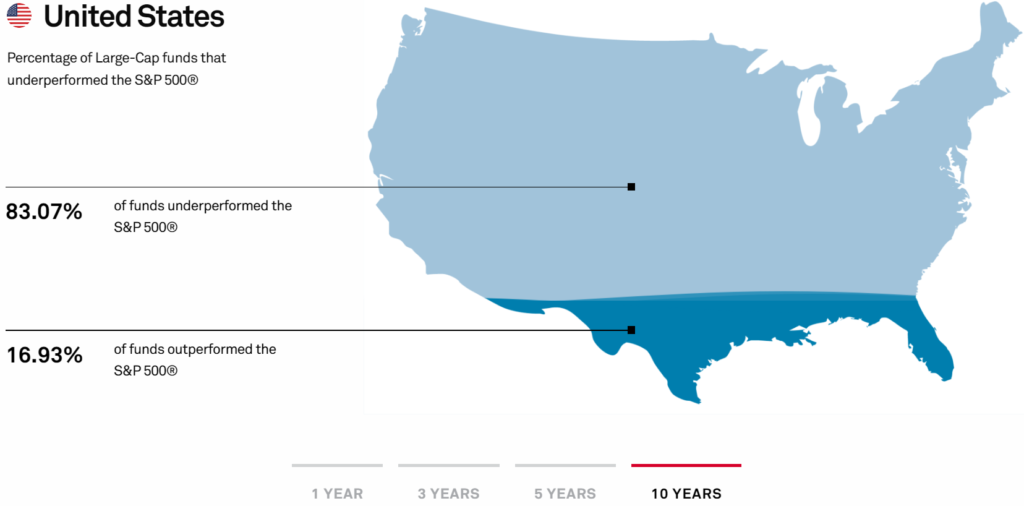
If you look across the board at a variety of different fund categories it’s a bloodbath. Even within the first year, way more than 62-98% of funds underperform across a range of market capitalizations.

Active Mutual Funds Don’t Consistently Outperform
Another recurring theme is that even when a majority of actively managed funds in a category have outperformed the benchmark over one time period, they have usually failed to outperform over multiple periods
SPG Global
The problem here is that to chase performance, successful actively managed mutual funds implement a strategy that works by picking the “hot” thing. That works while the hot thing stays hot, but it’s unlikely to stay that way over the long term. As we know, markets move in cycles and todays top performing area is usually tomorrows dog.
Want to see this in action? Here’s a list of the top performing active mutual funds available at Fidelity over the last 10 years.
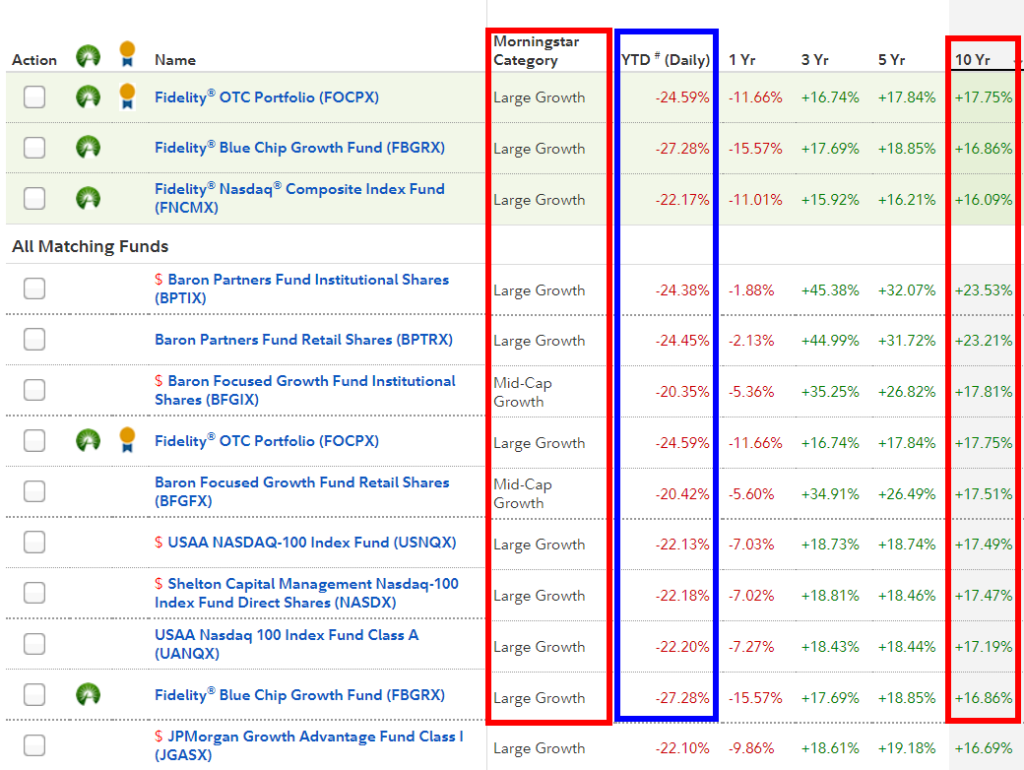
What do you see? The red boxes show that most of the top performers are large cap growth associated funds since growth stocks have been crushing it. However, 2022 has been a different story as you can see in the blue box and those same funds are getting crushed now.
Cost Of Ownership
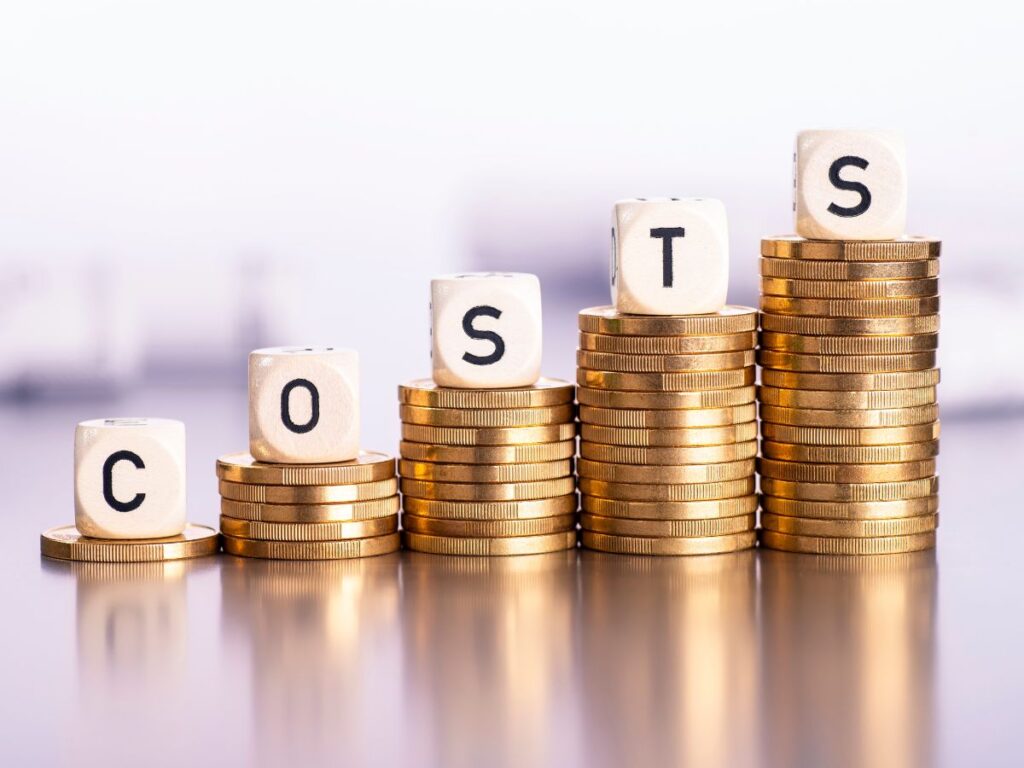
The investing world is full of sneaky ways to take your money. You rarely have to write someone a check for them to charge you fees because they already have your money. Before investing in something it’s important to understand the costs involved in buying, holding and selling that investment.
Fees
Active mutual funds often employ a variety of different investing strategies other than just buy and hold. Trading more frequently, buying investments that having higher trading expenses and buying things that aren’t even available to the average invest all have cost.
Add onto that a professional fund manager who gets paid a lot and the result is that the investment fees that you pay to own the mutual fund are much higher than a passive mutual fund.
That fee, called an expense ratio, if a percentage that you pay every year, to hold that mutual fund. Here is a passive and active mutual fund example – VTSAX with a 0.04% expense ratio.
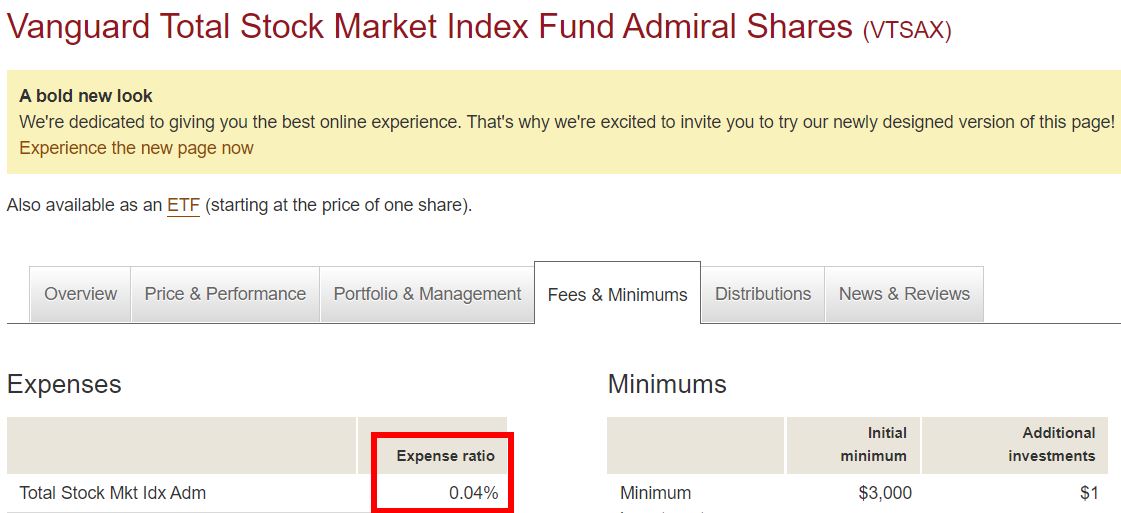
And here is an active mutual fund example that invests in well established medium to large cap US growth stocks. It has a 0.79% expense ratio.

What are the fees on each of these investments? If you were to hold $100,000 of each of these funds, you’ll be charged the following:
VTSAX (passive example, 0.03% expense ratio)= $100,000 * 0.0003 = $30/year.
FCNTX (active example, 0.79% expense ratio) = $100,000 * 0.0079 = $790/year.
That means that if you’re looking for the best performance, that blue chip fund needs to outperform VTSAX by 0.76% each year just to break even with it. If the blue chip fund under performs, you’re still paying that 0.79%.
Turnover Rate – Impacts Taxation Potential
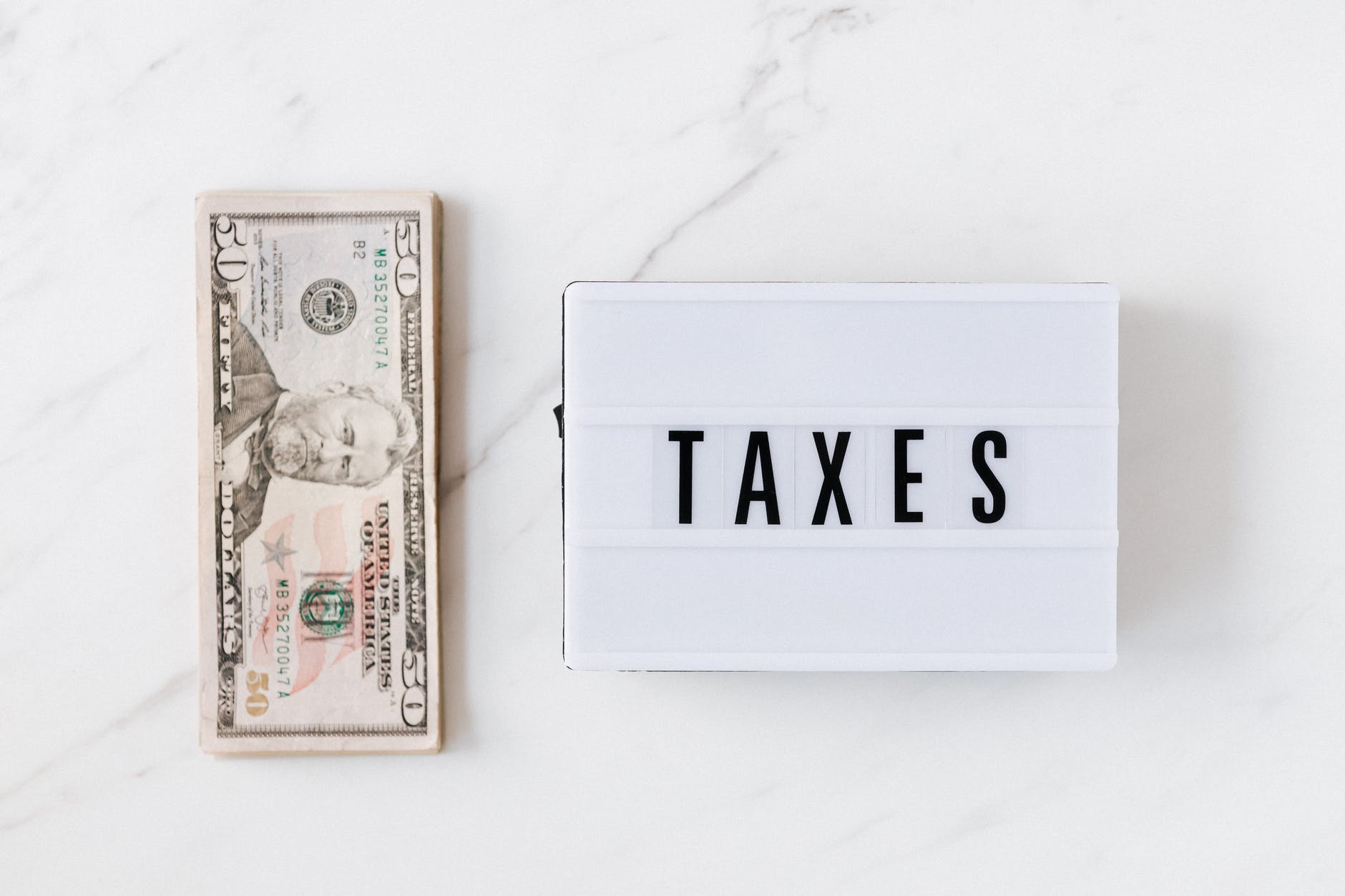
Actively managed funds tend to trade inside of them more often to meet their goals. Just like ordinary investors, those funds realize taxable gains and losses when they sell investments.
Those gains and losses are passed along to the fund holders so this metric is important if you hold a mutual fund within a taxable brokerage account. This issue doesn’t apply if you hold the funds with a tax advantaged retirement account like a 401k, 403b, TSP or IRA.
Turnover rate is a metric of how much buying and selling a fund does. The higher the number, the more buying and selling that occurs and more potential for higher expenses and also the flow down of gains and losses to you at tax time. The lower the number, the better from a potential for taxation perspective. An example below for FLGEX, a large cap growth fund.

The easiest place to see the impact of this trading on taxes is in the performance area. Here you can see the returns before and after the taxes associated with the sale of fund shares. In the 5 year column you can see that about 2% / year on average is lost to taxes.
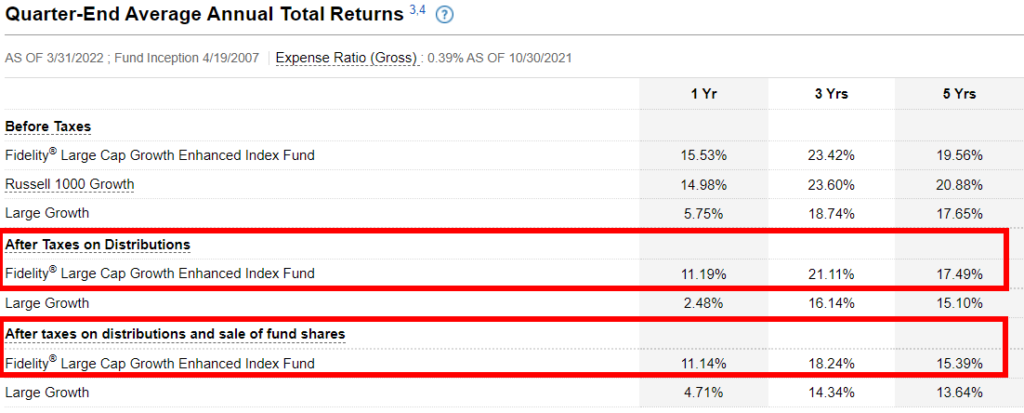
Trading Fees
This might seem crazy in todays world of no trading fees for many stocks and bonds but you have to watch out for trading fees with mutual funds. It’s not unusual for a broker to charge a sizable fee for EACH transaction in a mutual fund that is owned by another company.
For example, here’s a blurb right on Fidelity’s website. $50-$75 PER TRANSATION for some mutual funds.

Go into one of these funds and there it is. $49.95 per transaction. That means $49.95 each time you buy the fund. $49.95 each time you sell the fund. Even if you were to buy or sell $100,000 at a time, that’s adding a 0.05% fee to every transaction.

Loads (sales charge)
One big active mutual fund cost to watch out for are funds with loads. A load is a percentage fee that the fund charges to buy into that fund. This is a sales fee where they take your money and you’re never getting it back.
Here’s an example using a particularly awful active mutual fund that you can buy through fidelity.

This fund charges you 5.75% as a sales charge when you buy it. That means that if you want to buy $100,000 of this fund that they’re going to pocket $5,750 of your money as a sales charge and give you $94,250 worth of the mutual fund.
Then, to make it more awful, there’s a deferred sales charge when you sell. That’s right, they take more money when you sell AND it’s based off of the original purchase price. It doesn’t matter if the fund has gone down. Back to our example, you purchased $100,000 so this deferred load will charge you $1,000 when you go to sell it. Even if the fund value had dropped to $30,000.
Thankfully mutual funds with loads have become far less common but they still exist. Watch out for them and in general, stay away! Stick to looking for “no load” mutual funds which don’t charge this sales fee.
Diversification
Passive mutual funds are diversified in that they own the entirety of whatever benchmark that they’re trying to replicate. You own everything in a particular sector, market, index or industry.
Active mutual funds, however, are inherently less diversified. To beat the benchmark, they’re trying to only own the biggest winners in some market segment and not buy the losers.
In practice, though, to do that can mean that the biggest performing active funds are highly concentrated in what they own. Some funds may have rules about how much of any one investment that they can own but others may not.
Lets take that Baron Partners Fund as an example. In my Fidelity search of large cap US funds that was number one in 10 year performance. It’s actually 6% higher in performance any any other fund in 10 year performance.
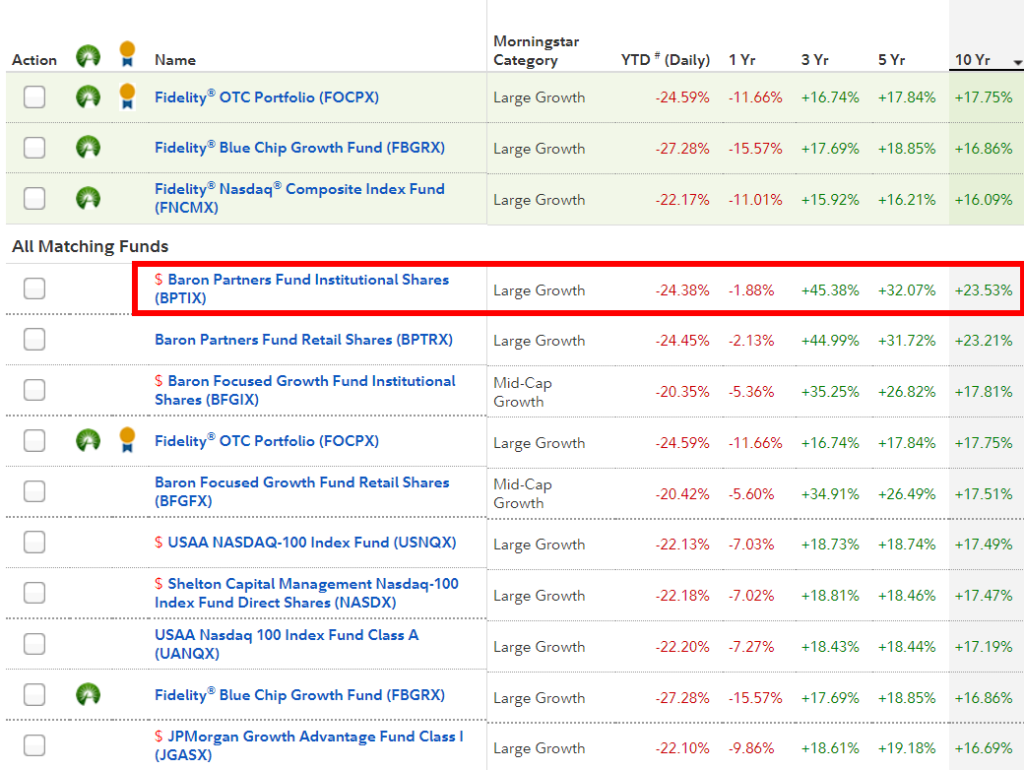
WOW! They must be doing something amazing. Lets look more closely at the fund starting with their strategy. Oye, they’re using leverage by borrowing up to 33% of the total value of the fund. Well, that sounds a bit risky.

What are they buying with that borrowed money? Holy crap. They own a total of 32 investments with 54% of the fund holding Tesla stock! Did I mention that this fund has a 1.36% expense ratio so you’re paying a nice fee to hold a fund that’s heavily concentrated in Tesla.

This might be an outlier but it’s just one example of how actively managed funds can do some pretty extreme things to outperform. If Tesla tanks this fund will crash. If it tanks badly enough it could get margin called and blow up.
Are Passive Mutual Funds Superior To Active Mutual Funds?
Based on the data presented I sure think so. On average, active mutual funds largely underperform their benchmarks, have much higher fees and are less diversified than passive mutual funds. If held in a taxable account an active fund is going to generate more taxes making it even harder to compete on an after tax basis.
The odds of an actively managed mutual fund beating its benchmark over 10 years is very low, let alone over a 20, 30, 40 or 50 year investors lifetime. The odds of you then picking one of those unicorn funds AND that fund being open to a retail investor are low. What is for certain is that you’re going to pay higher fees, will be less diversified and will have greater tax liability in a brokerage account.
Is it possible for an active mutual fund to outperform, net of fees, after taxes, over the long term? Highly unlikely. Even iconic funds like Fidelities Magellan fund has underperformed over very long time horizons. Here is a comparison between that fund and the S&P500 from 1994 to 2022.

What Do We Invest In?
We’re 100% invested in passive mutual funds and ETFs with a vast majority of it in a three fund portfolio: Total US stock market, total international stock market ex-US, total US bond market. Here’s an example from my Roth IRA.

I try and stay open minded to the possibility that there could be a place for an active fund as a part of our portfolio in the future but I haven’t found a compelling reason yet.
Do you invest in any actively managed mutual funds? If so, which ones and why? Comment down below.
Like the content? Click here to subscribe to the e-mail list and have the articles delivered to your inbox.

